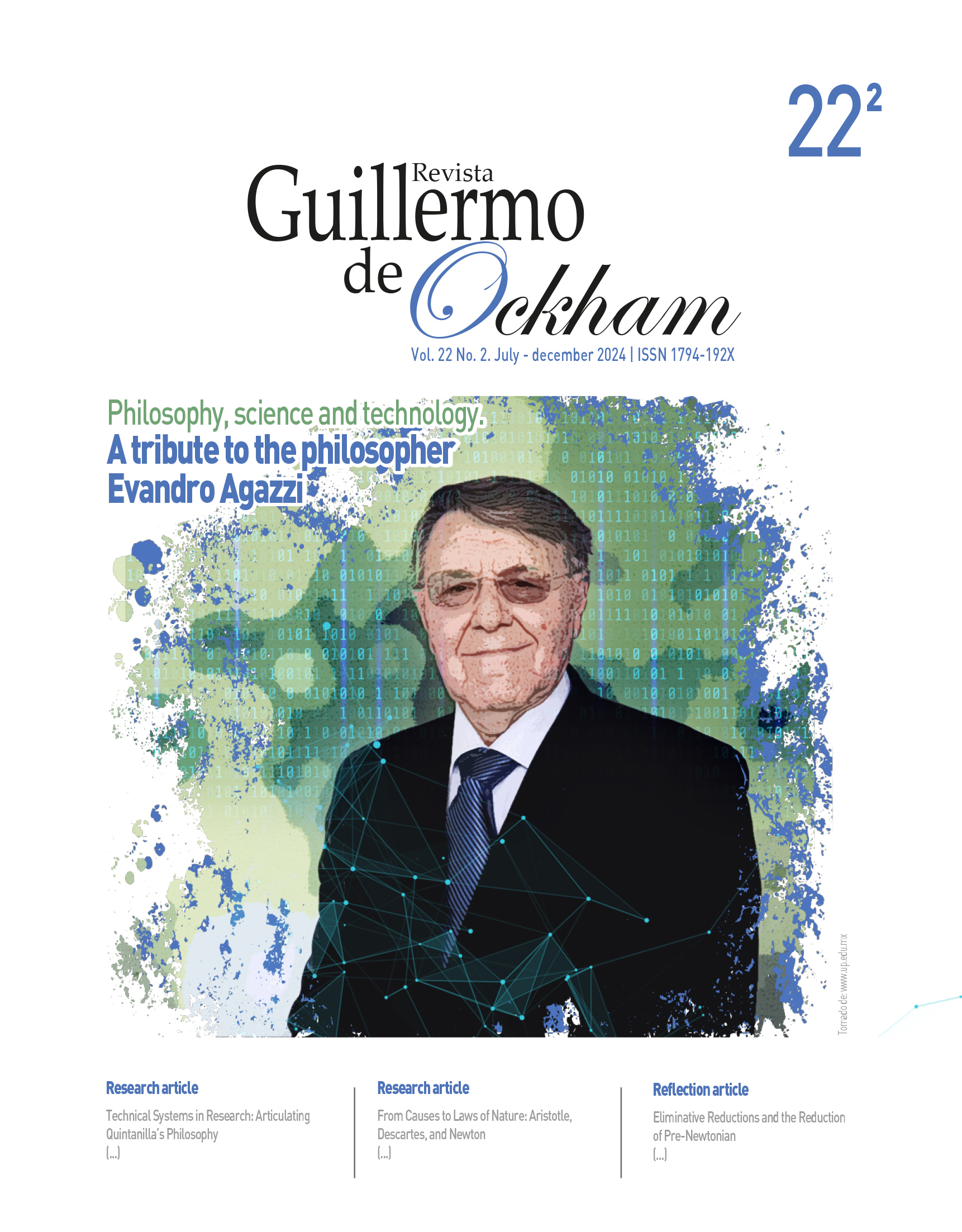The Revista Guillermo de Ockham provides an immediate and open access to its content, based on the principle of offering the public a free access to investigations to provide a global interchange of knowledge.
Unless otherwise established, the contents of this journal has a license with Creative Commons Attribution-NonCommercial-NoDerivatives 4.0 International (CC BY-NC-ND 4.0) http://creativecommons.org/licenses/by-nc-nd/4.0/
- Attribution: You must give appropriate credit, provide a link to the license, and indicate if changes were made. You may do so in any reasonable manner, but not in any way that suggests the licensor endorses you or your use.
- NonCommercial: You may not use the material for commercial purposes.
- NoDerivatives: If you remix, transform, or build upon the material, you may not distribute the modified material.
- No additional restrictions: You may not apply legal terms or technological measures that legally restrict others from doing anything the license permits.
Resumo
En las últimas décadas han emergido en la filosofía de la ciencia dos propuestas en torno a los modelos científicos y su función representacional. De acuerdo con una de ellas, los modelos científicos se subsumen en la categoría de las representaciones epistémicas. Según la otra, los modelos científicos se subsumen en la categoría de las representaciones-como. Este artículo propone que existe una equivalencia extensional entre las representaciones epistémicas y las representaciones-como. Esta tesis se defiende argumentando que las condiciones necesarias y suficientes que determinan la representación-como son aquellas que explican cómo son posibles los razonamientos subrogatorios, los cuales son el síntoma que se emplea en la literatura para definir las representaciones epistémicas. Una consecuencia de esta tesis es que la aceptación de una de las propuestas en torno a los modelos científicos y su función representacional implica la aceptación de la otra. Otra consecuencia y su principal beneficio es ofrecer una propuesta sobre cómo son posibles las representaciones epistémicas.
Referências
Bolinska, A. (2013). Epistemic representation, informativeness and the aim of faithful representation. Synthese, 190, 219-234. doi.org/10.1007/s11229-012-0143-6
Callender, C., y Cohen, J. (2006). There is no problem of scientific representation. Theoria, 21(1), 67-85. https://doi.org/10.1387/theoria.554
Contessa, G. (2007). Scientific representation, interpretation, and surrogative reasoning. Philosophy of Science, 74(1), 48-68. https://doi.org/10.1086/519478
Contessa, G. (2011). Scientific models and representation. En S. French y J. Saatsi (Eds.), The Continuum companion to the philosophy of science (pp. 120-137). Continuum.
Contessa, G. (2013). Models and maps: An essay on epistemic representation (manuscrito no publicado). Carleton University. https://philpapers.org/rec/CONMAM-9
Elgin, C. Z. (1983). With reference to reference. Hackett.
Elgin, C. Z. (2009). Exemplification, idealization, and scientific understanding. En M. Suárez (Ed.), Fictions in science: Philosophical essays on modeling and idealization (pp. 77-90). Routledge.
Elgin, C. Z. (2010). Telling instances. En R. Frigg y M. C. Hunter (Eds.), Beyond mimesis and convention: Representation in art and science (pp. 1-18). Springer.
Frigg, R. (2006). Scientific representation and the semantic view of theories. Theoria, 21(1), 49-65. https://doi.org/10.1387/theoria.553
Frigg, R., y Nguyen, J. (2017). Scientific representation is representation-as. En H. K. Chao y J. Reiss (Eds.), Philosophy of science in practice (pp. 149-179). Springer.
Goodman, N. (1968). Languages of art. The Bobbs-Merrill Company.
Goodman, N. (1984). Of mind and other matters. Harvard University Press.
Hughes, R. I. G. (1997). Models and representation. Philosophy of Science, 64, S325-S336. https://www.jstor.org/stable/188414
Koyré, A. (1977). Estudios de historia del pensamiento científico (E. Pérez Cedeño y E. Bustos, Trads.). Siglo XXI.
Nguyen, J. (2016). How models represent [Tesis doctoral, London School of Economics and Political Science]. London School of Economics and Political Science. http://etheses.lse.ac.uk/3527/1/Nguyen_how_models_represent.pdf
Racines Correa, J. I. (2020). Modelos y representación científica: denotación, ejemplificación, interpretación y atribución [Tesis doctoral, Universidad del Valle]. Biblioteca Digital. https://bibliotecadigital.univalle.edu.co/handle/10893/19989
Racines Correa, J. I. (2022). Problemas filosóficos para una teoría de la representación científica. Discusiones Filosóficas, 23(41), 59-80. https://doi.org/10.17151/difil.2022.23.41.4
Suárez, M. (2003). Scientific representation: Against similarity and isomorphism. International Studies in the Philosophy of Science, 17, 225-244.
Swoyer, C. (1991). Structural representation and surrogative reasoning. Synthese, 87, 449-508. https://doi.org/10.1007/BF00499820































